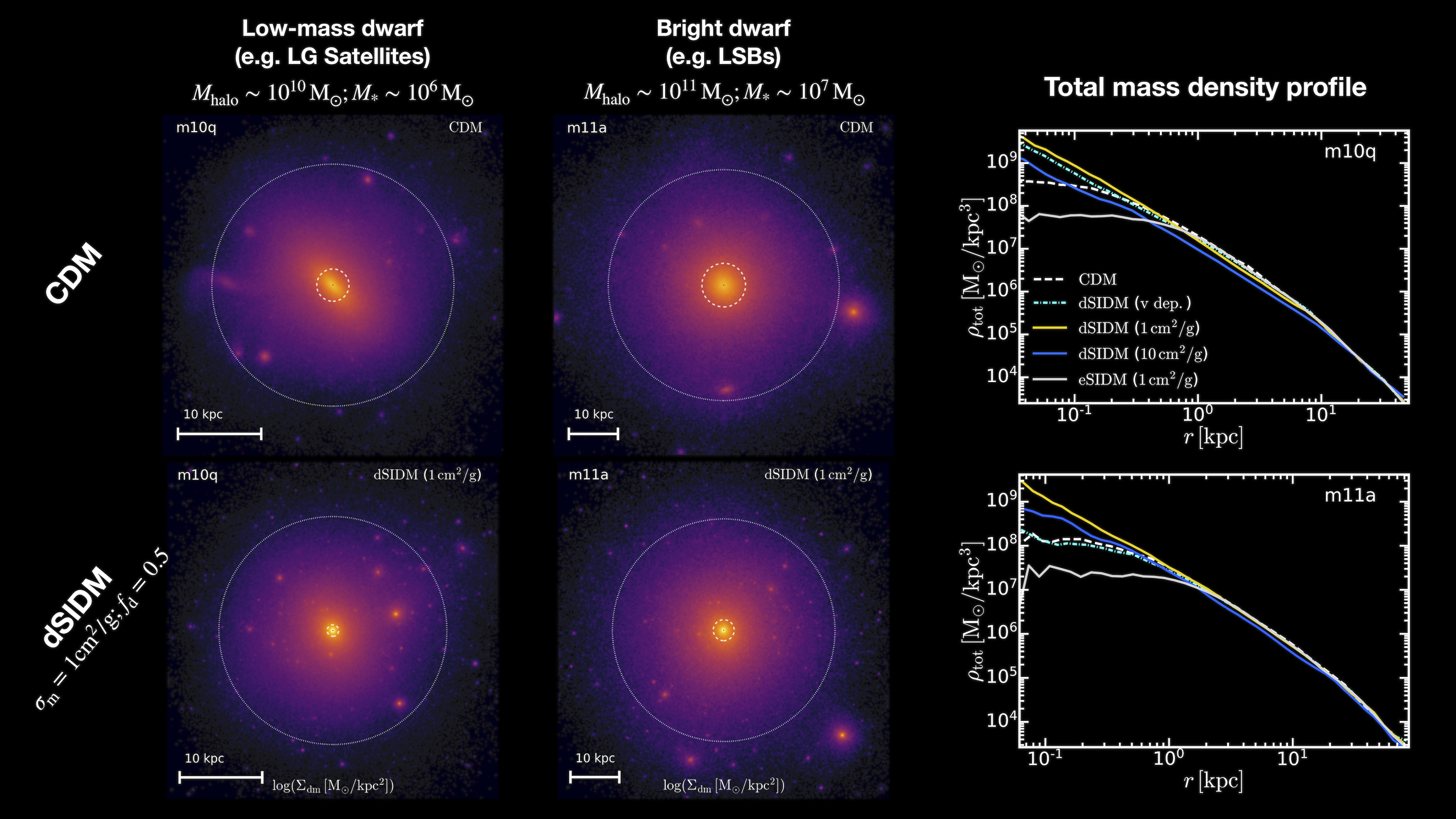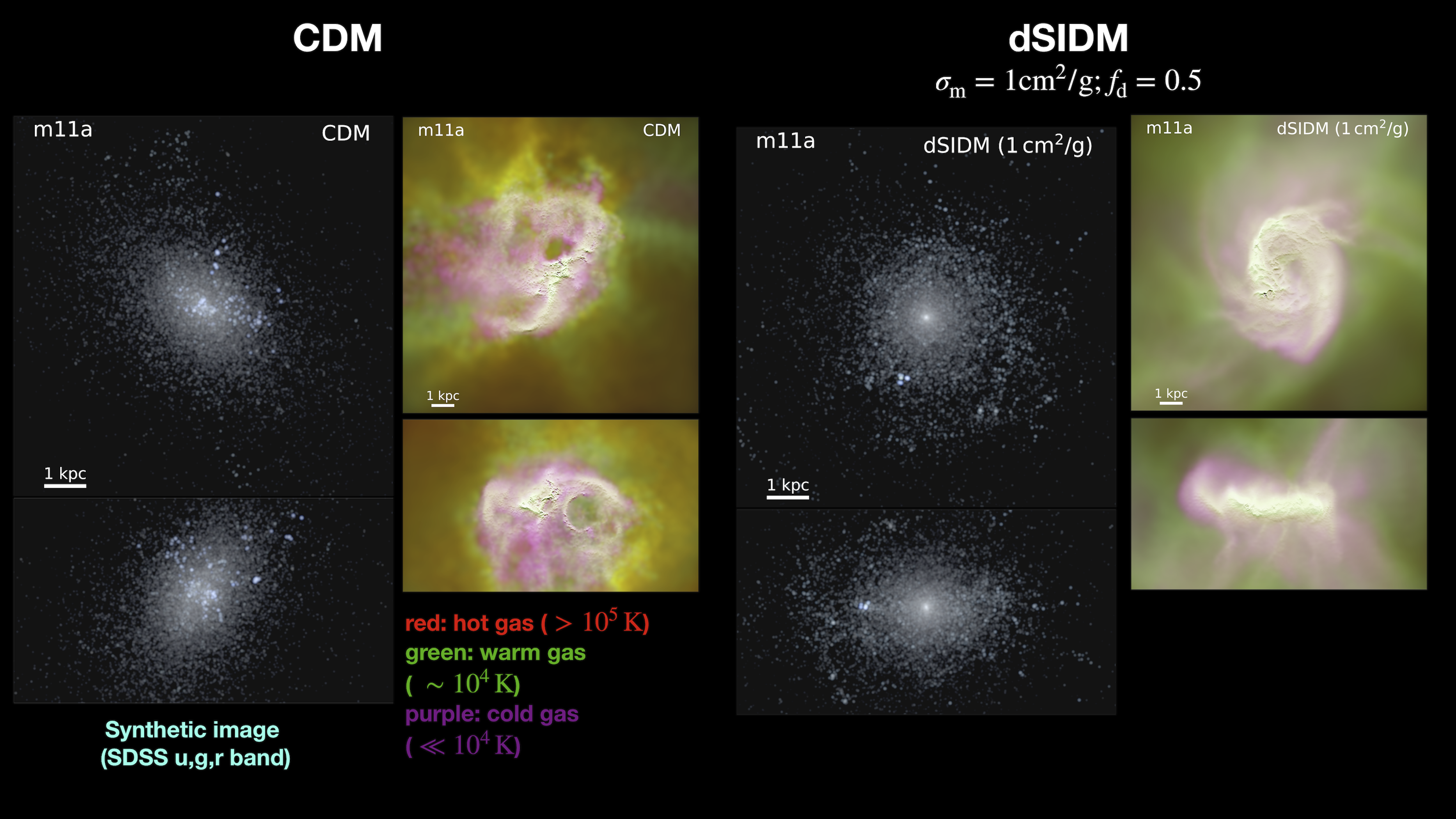Self-Interacting Dark Matter
Despite its veiled nature, dark matter is considered the main driver of structure formation in the Universe. The current paradigm, the cosmological constant plus cold dark matter (ΛCDM) cosmological model, has been successful in describing the large scale structures in the Universe. However, in recent decades, evidence from astrophysical observations on small-scale (∼ kpc) structures and absence of signal from particle physics experiments have motivated conjectures on alternative dark matter models.
Self-interacting dark matter (SIDM) is an important category of alternative dark matter models (or in general hidden-sector models for beyond-standard-model physics) that has been proposed and discussed in the literature for about three decades. The introduction of SIDM could potentially solve some small-scale problems (see the review by Tulin Sean and Yu Hai-Bo).
Relavant Projects
-
Dissipative SIDM models
Most of the previous studies on SIDM focused on elastic dark matter self-interactions. However, in many particle physics realizations of SIDM, dark matter have inelastic (or specifically dissipative) self-interactions. The impact of dissipative processes of dark matter has not yet been explored in the context of cosmological structure formation. This motivates us to conduct the first cosmological hydrodynamical simulations in dissipative SIDM, with the inclusion of the state-of-art model for baryonic physics.
We find apparently more concentrated dark matter distributions at halo centers, driven by a dark subsonic cooling flow. This is in contrast with the baryonic feedback produced cores in the vanilla CDM model. DSIDM models feature a power-law like density profile with the asymtotic slope -3/2, regardless of the effective interaction cross-section. The neutral gas/stellar disks are promoted in dSIDM models. For more detail, check out Paper I and Paper II of the series.


-
Cluster-scale constraints for the elastic model
Galaxy clusters with the typical halo mass ≳1014M⊙ are ideal environment to study dark matter interactions. The thermal averaged interaction rates of dark matter (either self-interaction or baryon-scattering) linearly scales with the velocity dispersion of dark matter particles, which are an order of magnitude higher than e.g. the Milky Way value. In fact, the observation of "bullet"-like merging clusters provided strong constraints on potential dark matter-baryon or dark matter self-interactions. In a recent work, we compiled a sample of morphologically relaxed clusters in the Chandra and ROSAT archive, and confronted them with hydro simulations.
-
Early-Universe constraints
This follows the ETHOS study of high redshift observables in the SIDM model featuring dark acoustic oscillations, for which I worked on as the summer student at MIT in 2017. In 2023, I worked on a follow-up project using the THESAN simulation of the epoch of reionization Universe to study early structure formation in alternative dark matter models.
Another interesting topic that I am working on with Huangyu Xiao at Fermi Lab is the seeding of supermassive black holes (SMBHs) in the early Universe with dissipative dark matter. Our study showed that, with approporiate choice of parameters, a hit-and-stick type of dissipative dark matter (e.g. asymmetric dark matter nuggets) can collapse to massive SMBH seeds in rare, massive haloes, which could be the progenitors for the observed billion solar mass quasars at z≳7.
-
Atomic dark matter or generic hidden-sector models
Atomic dark matter is a natural category of dissipative SIDM models. It represents a more realistic hidden sector which mimics the E&M sector of the standard model. In a recent work, we implement the atomic dark matter in the simulation code GIZMO and perform the first cosmological simulation of galaxy formation in atomic dark matter.

